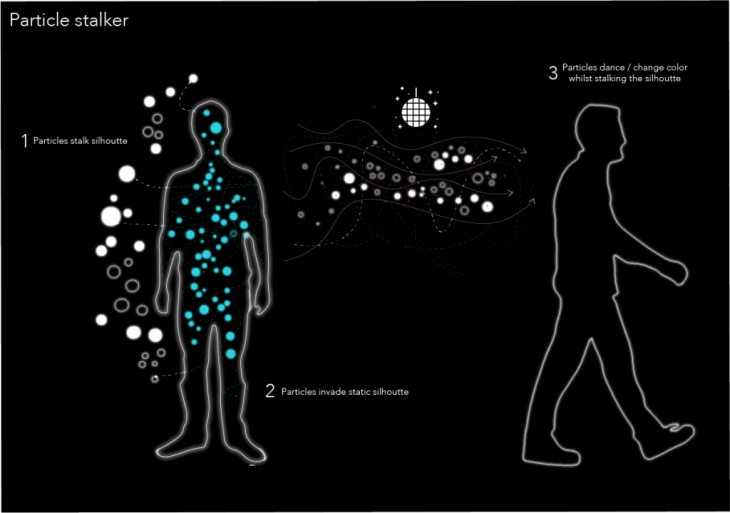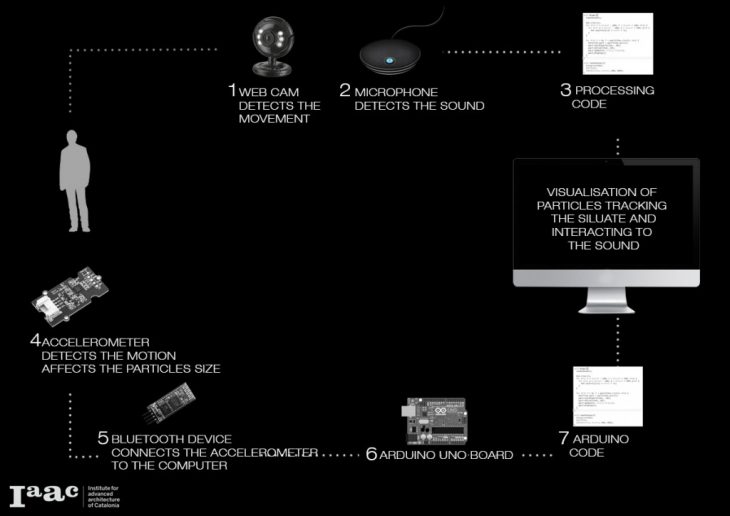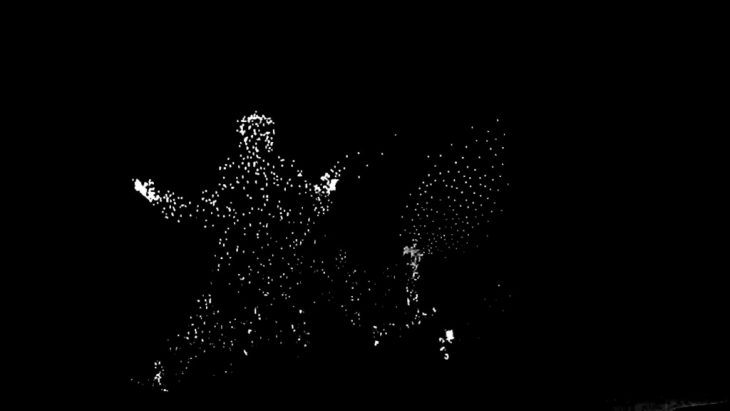Particle Stalker
We started with the idea of the creation of particles, It was a great challenge to use arduino + processing as a symbiotic system.
Our first Idea was having an interaction between Humans and Music through a visual experience. Inspired by nature we started by simulating some basic behaviors and generated a series of complex systems, like the ones you would observe from a school of fish or swarm of bees, that in every fish swims considering only it’s neighbors. We initiated some discrete autonomous particles and defined some basic rules that characterized their behavior, only then we let them act according to their assigned commands, which included responses to environmental factors such as sound intensity, visual interaction and motion detection.

In order to create the perfect setting we added the camera and the microphone from the computer to bring the human factor into the picture, having as an end result the connection between the physical environment into the virtual world. After this connection, a series of tests took place in order to understand the behavior of our particles, taking this action in mind we calibrated it accordingly to our desired design.

One of the test consisted in the processing’s abilities to detect a silhouette, specifically the background subtraction method , after many attempts and testing with various libraries we were able to give our particles a dynamic attractor point; another layer of interaction was added which was making our particles move accordingly to sound intensity- the more intense the sound the more the particles would scatter, when exposed to calmer sound frequencies they would react in a more serene way. An unexpected result that was observed were the formation of sound vibration patterns, similar to what you see when you lay a pile of sand on top of a speaker and as the sound frequencies change so do the sand particles creating these naturally geometrical shapes.

We found that it was a challenge to unite these programs, because they, as a separate system already work so well. With simple local rules for each particle and all the arduino inputs we were able to generate a whole complex system.